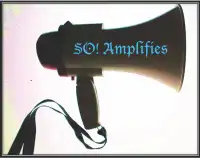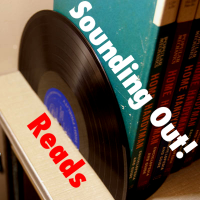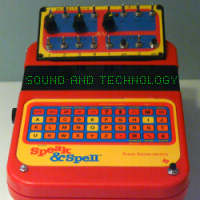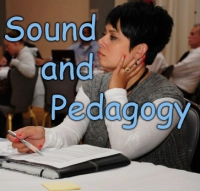Park Sounds: A Kansas City Soundwalk for Fall

Fall refuses to stay put in Kansas City. The past month Kansas City temperatures have skyrocketed to 70 comfortable degrees fahrenheit and plummeted to 20 chilly degrees. I decided to partake of a wonderfully mild Sunday afternoon last Thanksgiving weekend to do another one of my Kansas City soundwalks, this time the fall edition. Fortunately the weather was cooperating, and I didn’t have to worry about how long I could resist standing in the cold.
Even though the weather was wonderful for a soundwalk, I couldn’t choose where to go. I have blogged about three soundwalks so far, and for each of them the choice seemed more organic: for my first soundwalk, in 2010, I wanted to walk around my new neighborhood and begin to understand it from an aural point of view. For my second soundwalk (in 2011) I went to one of my favorite places in Kansas City, the Country Club Plaza, and provided a snapshot of the sounds of spring in this busy area of Midtown. On my personal blog, in time for World Listening Day 2011, I talked about sounds from my own porch for a summer edition of my KC Soundwalks series, in order to think about the soundscape where I live. However, for this fourth soundwalk my only requirement was that it be a place I had not been to before. I wanted to venture out to somewhere new and encounter it not just with my eyes but also with my ears. Technically, I could go anywhere in Kansas City and do a soundwalk, but that was the one thing keeping me from doing a soundwalk: I couldn’t choose.
Last Sunday I decided I had to just get in the car and go. I had planned (and postponed) several soundwalks up until that day (I had even tweeted that I was leaving the house, in hopes of that forcing me to commit), so that day I planned to finally take some time to do my soundwalk before I went back to work. I got in the car with my daughter, destined for the West Bottoms neighborhood. I figured I’d take the long route instead of the quick and easy highways. As we drove along the side streets, I saw a park—a park neither of us had been to before, Jarboe Park—and I figured we could stop there, play for a while, and then drive off for my soundwalk. In any case, she might be good and tired by the time we arrived at our final destination, and I could put her in the stroller while I recorded and took notes.
That’s not what happened.
Once we arrived at the park, a moment of inspiration hit when I saw some musical instruments of sorts as part of the jungle gym, something I hadn’t seen before.
LISTEN: Walking_to_Jarboe_Park._Cars_coming.
When we arrived, Jarboe Park was deserted. The bare trees didn’t make it any more inviting, but the park is in newly minted condition and full of bright colors. It showed no signs of life, or wear and tear; in fact, the jungle gym and the swings seemed new. (According to The City of Kansas City, MO’s website, this park was remodeled in 2011.) Jarboe Park is located in a residential neighborhood, across from Primitivo García Elementary School. During the semester it surely gets more use. Perhaps it was too early on a Sunday for families to be out and about at the park. Coincidentally, a family appeared about an hour after we arrived, but they went to the basketball court across the street.

Jarboe Park swings, still. Picture by Liana Silva.
LISTEN: Swings._A_Child’s_Laughter._
The first thing that caught my attention at the park was the presence of musical instruments set up at the entrance. I do not remember seeing anything similar before at a children’s jungle gym. There was a set of bells, a xylophone, some rainmakers, a whistle, and a drum set. Their presence seemed to indicate that making sounds/music/noise was also part of the experience of being in the park as well as part of the experience of growing up. Sound, specifically making sounds, became part of play, in this context.
In the quietude of the noon time the sounds these instruments made felt a little sad instead of happy; the fact that there was only one child (ok, two, including myself!) playing with these instruments made their sounds stand out more, in relation to, say, the sounds of the trains and the highways (which I will discuss below). At the same time they drew attention to the fact that they were the only sounds that the park was making. If the park were busy, the sounds of the instruments would probably fade into the soundscape instead of being the loudest sound. However, the fact that we were playing with these instruments–versus playing instruments–made the park seem less lonely. We were part of the sounds, we were making sounds, and that seemed to distract me from the fact that we were the only people there making sounds. Although the plastic and metal instruments were not like traditional instruments, I wondered what their purpose in the jungle gym were. If the spider web and the swings are meant to exercise certain parts of the body and practice certain ways of socializing, what did the instruments teach? Perhaps the instruments are meant to teach children that instruments produce sounds, and they produce them in different ways. Lastly, the instruments and the act of creating sounds must use a different part of the brain–and my daughter was quite excited to play with the drum set!
LISTEN: Playing_musical_instruments_at_Jarboe_Park
Other than the sounds of the instruments, I also noticed the sounds of the highway and the train. I found a corner of the park where I could stand and record the sounds of the city:
LISTEN: Train_whistles._Miss_E_calls._
Kansas City is intersected by train tracks, and it almost feels like if you pay close attention, you can hear a train in the distance at any corner of the city. In fact, in the dead of a lazy afternoon or the quiet of the wee hours of the night I can hear the trains’ whistles, announcing their passing through the city, from my neighborhood of Rosedale in Kansas City, Kansas. If soundwalks can be a sonic ethnography of a city, my soundwalks have so far revealed that the sound of trains are an essential part of the KC soundscape as well as a reminder of the city’s history: the Kansas City Stockyards. I could also hear the low buzzing of the cars on the highway, another sound I’ve come to recognize as uniquely Kansas Citian, or at least part of my soundsscape. The murmur of the traffic ways is like the sound of Kansas City’s blood coursing through its veins.
LISTEN: Hum_of_the_highway._A_car._Train._
This spur-of-the-moment soundwalk made me think of how listening and sound can prompt reflection about the identity of a neighborhood and of a city. As I wrote down notes, I wondered: how do parks add to a community’s soundscape? The sounds add to the community’s identity as a residential area as an area that is amenable to the presence (physically and in aural terms) of other people. Soundscapes are connected to our ideas of what constitutes a neighborhood, and specifically how important common spaces like parks are, with all the sounds that may ensue. On a broader level, my Kansas City soundwalks are helping me piece together a soundscape of Kansas City, and to think through sound as a way to understanding the urban culture of this city, with its music, its fountains, its sports, and its trains, among other things. I feel like my listening practices are directly tied to my developing connection to this Midwestern city.
Postscript: I never did make it to the West Bottoms that Sunday. But it’s still on my list of KC spots to visit.
Featured Image: “Downtown from Top of Liberty2″ by Wikimedia user Hngrange, under Creative Commons 3.0 license.
–
Liana M. Silva is co-founder and Managing Editor of Sounding Out!

























Trackbacks / Pingbacks